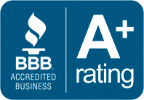Tune and Maintain Heating Equipment for Efficiency
One of the most effective ways to reduce energy costs is to ensure your heating system is running at peak efficiency. Schedule a thorough tune-up of your building’s boiler, furnace, or heat pumps each fall. Professional maintenance – like cleaning burners, replacing filters, and calibrating controls – helps the system burn fuel more efficiently and prevents wasting energy. Well-maintained equipment uses less fuel to produce the same amount of heat, directly lowering your bills. Regular servicing also catches issues early so that a small inefficiency doesn’t turn into a costly breakdown on the coldest day of winter. In short, building energy efficiency starts with an efficient heating plant.
Upgrade Insulation and Seal Drafts
Heat loss through the building envelope is a major contributor to high winter energy costs. Inspect your property for places where warm air might be escaping: old windows, gaps under doors, or poorly insulated walls and roofs. Adding or upgrading insulation in attics, walls, and boiler rooms helps retain heat so the heating system doesn’t have to work as hard. Likewise, sealing drafts around windows and exterior doors with weather stripping or caulk will prevent cold air infiltration. Even simple fixes – like closing chimney dampers or installing door sweeps – keep more heat inside. These improvements not only make tenants more comfortable but also significantly reduce fuel consumption. By tightening up the building, you improve overall commercial heating fuel management because less heat wasted means less fuel burned.
Use Smart Thermostats and Building Controls
Modern control technology can yield substantial savings without sacrificing comfort. Installing smart thermostats or a building automation system allows you to better regulate temperatures based on actual need. For example, you can program lower temperatures during overnight hours or in unused spaces, then automatically raise the heat before people arrive in the morning. Smart controls prevent overheating and eliminate the common scenario of heating an empty building at full blast. Many NYC commercial buildings now use internet-connected thermostats or centralized control systems that optimize heating schedules and respond to weather forecasts. By fine-tuning when and where heat is delivered, property managers can avoid energy waste and see noticeable reductions in fuel usage. Smart controls essentially make your building “think” more strategically about heating, which translates into cost savings and improved comfort.
Optimize Heating Fuel Purchasing and Management
The price of heating fuel and the way you manage deliveries can also impact your winter energy expenses. First, consider your fuel purchasing strategy: locking in a fixed price contract or joining a fuel budget program can protect your building from market price spikes during peak winter months. This helps you budget with confidence. Additionally, ensure you have a plan for reliable deliveries – running out of fuel can lead to emergency refill fees and system restart costs. Many NYC buildings enroll in automatic delivery services so that fuel arrives on time based on actual usage patterns. Installing tank monitors that provide real-time fuel level data is another great tool for commercial heating fuel management. These monitors ensure you only get deliveries when needed and avoid overfilling or last-minute orders. By being smart about how and when you buy fuel, you can keep costs steady and take advantage of lower off-season rates or bulk discounts. In essence, managing your fuel supply efficiently is as important as managing how it’s used in the boiler.
Consider Upgrading to More Efficient Heating Fuel Systems
If your building’s heating equipment is outdated, investing in modern, high-efficiency equipment can yield long-term savings. Older oil or gas boilers, for instance, might only convert 60–70% of fuel into useful heat, whereas new high-efficiency models can achieve 85–95% efficiency. Upgrading to a condensing boiler or an ENERGY STAR® certified furnace means more heat output for each dollar of fuel. Over a few winters, the fuel savings can offset the installation costs. Additionally, some NYC commercial buildings are exploring heat pump systems or hybrid systems that pair with existing boilers – these can reduce fuel consumption during milder weather by using electricity efficiently. When considering upgrades, look at the lifecycle cost: a system that is cheaper to run will pay for itself and then continue to save money each year. Beyond equipment, you might also explore supplemental solutions like heat recovery ventilators (to reclaim waste heat) or steam trap replacements in older steam systems. All of these upgrades improve your building’s overall efficiency. By investing in better technology, NYC building owners can future-proof their properties against rising fuel prices and stricter energy regulations, all while enjoying lower winter operating costs.
In Conclusion
Reducing winter energy costs in NYC’s commercial buildings is achievable through a combination of maintenance, smart improvements, and strategic planning. Each step – from tuning your boiler to sealing leaks and optimizing fuel use – contributes to meaningful savings. Implementing these measures will help keep your tenants warm and your budget under control, even during the coldest New York months.
Contact us to get more information and to see how we can help!






Managing Bioheat Heating Oil Across Multiple NYC Buildings
For property managers overseeing multiple buildings, heating decisions go beyond individual boilers or one-off deliveries. Heating oil planning at the portfolio level requires consistency, reliability, and long-term operational clarity—especially as cleaner heating fuel options like Bioheat heating oil become more common across NYC.
Signs It’s Time to Replace Your Heating Oil Tank in NYC
Most NYC homeowners don’t think about their heating oil tank—until something feels wrong. A strange odor in the basement. A comment from a delivery driver. A technician pointing out corrosion during routine service. These are usually the moments when homeowners first start asking whether a heating oil tank should be replaced.